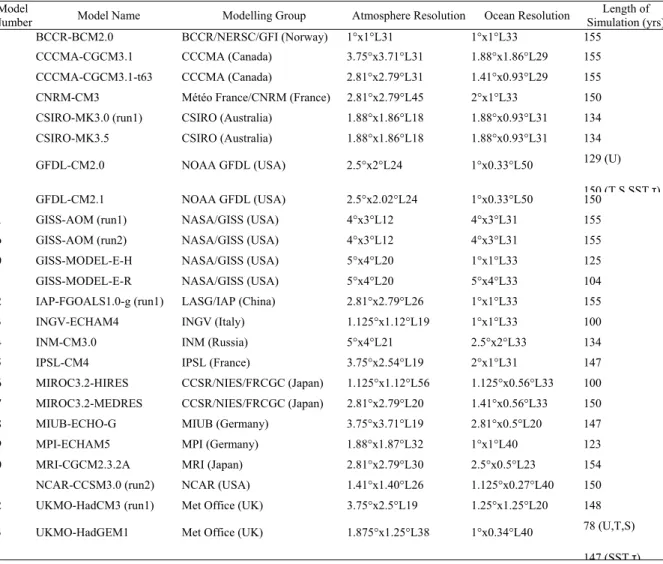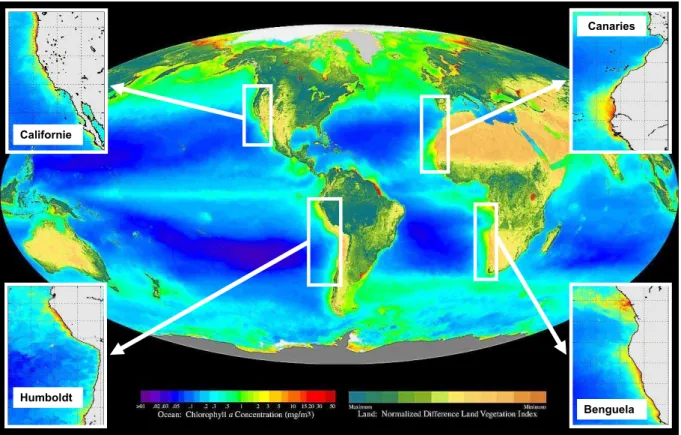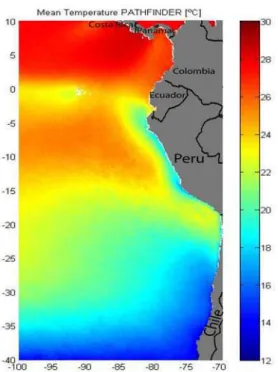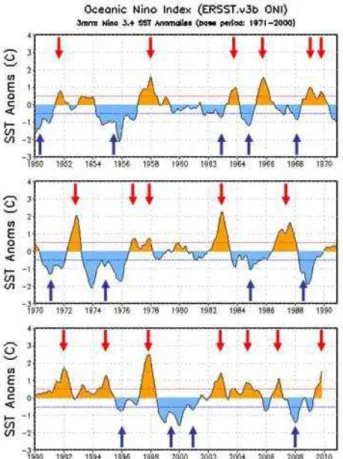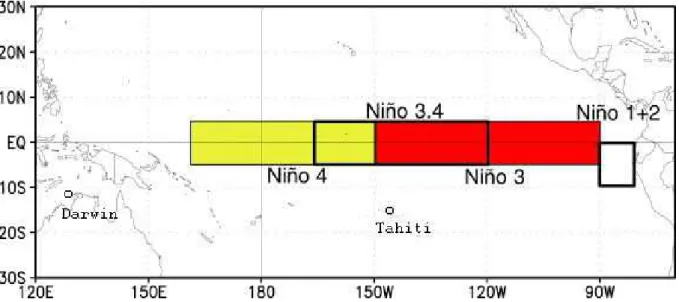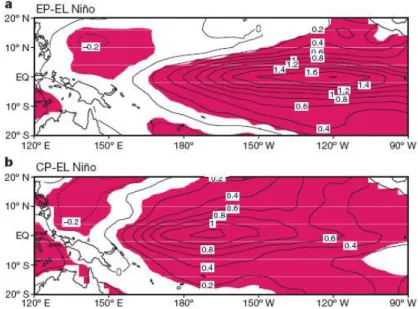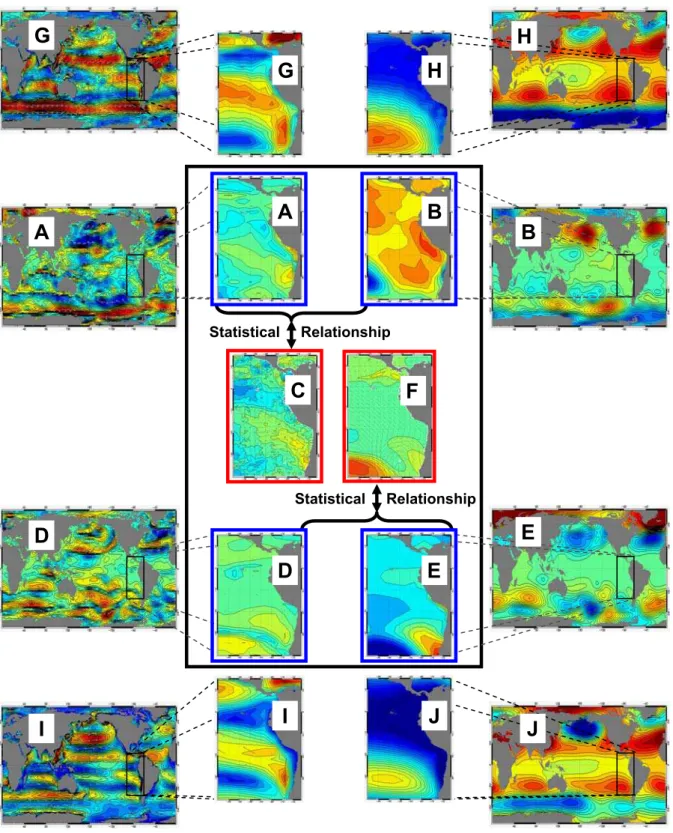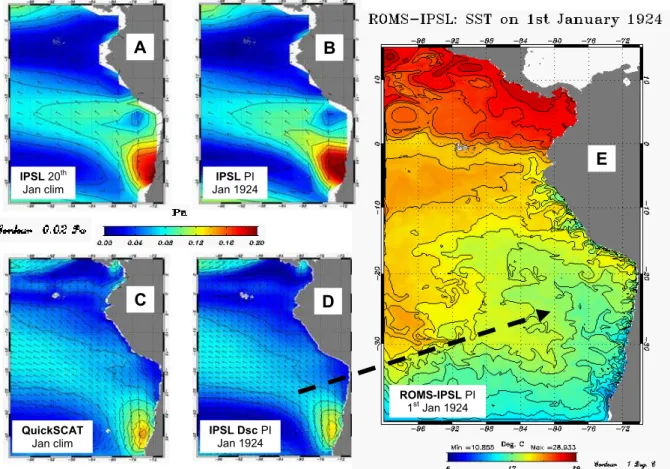Thanks to the IRD, to CLS is that CNRS will get this three-year-old financial counterpart. I would like to dedicate this dissertation to my late grandfather, Sidi Driss Bel Madani, who always dreamed that I would one day become a doctor. I am grateful to him for his confidence in my ability to carry out my research project, which was not an easy task.
Last but not least, I thank him for his continued support of my postdoctoral professional project. Many thanks also to my Peruvian colleagues from CIMOBP at IMARPE (Lima), who welcomed me with open arms upon my arrival in Peru, and who shared their daily lives during these two wonderful years together. A special thought goes out to my office colleagues: Jérôme Bouffard, Fabien Durand, Fernanda Jardon, Anne-Charlotte Peter, Pascal Terray, Myriam Khodri.
A big thanks also to my family and friends for their constant encouragement and support. Last but not least, I am deeply grateful to my wife Dominique, who has been by my side for several years and who never failed to support me during the last three years, which were not always easy. .
Résumé
En particulier, cela permet de documenter l'influence des ondes Kelvin équatoriales intrasaisonnières sur la variabilité proche des côtes, illustrant ainsi l'importance du forçage à longue portée d'origine équatoriale pour la dynamique régionale du HCS. Nos résultats montrent notamment que la largeur critique du modèle se situe entre 5 et 15 degrés au sud de celle prédite par la théorie linéaire des ondes libres baroclines, notamment pour les oscillations autour de 120 jours. Le modèle régional montre une variabilité significative dans la mer au sud de la latitude critique théorique, ce qui est également vrai pour les données satellitaires, soulignant ainsi les limites de la théorie linéaire dans l'est du Pacifique Sud.
Plus généralement, ce travail propose une méthodologie pour mener des expériences de réduction d'échelle du changement climatique, faisant le lien nécessaire entre les simulations du réchauffement climatique à l'échelle planétaire et les études d'impact sur les écosystèmes, la pêche et l'agriculture et la société au niveau local. Les travaux contribuent également à améliorer notre compréhension de certains mécanismes d’intérêt pour de telles études du changement climatique à l’échelle régionale.
Abstract
This control simulation is also used to document the impact of intraseasonal equatorial Kelvin waves on nearshore variability and illustrates the importance of remote forcing of equatorial origin for the regional dynamics of the HCS. In particular, it is found that depending on the vertical baroclinic mode, the critical latitude in the model is about 5 to 15 degrees higher than that predicted by linear free baroclinic wave theory, especially for 120-day oscillations. The regional model has significant offshore variability south of the theoretical critical latitude as in satellite data, emphasizing the limits of linear theory in the eastern South Pacific.
Overall, this work proposes a methodology for climate change downscaling experiments, which are the necessary link between global-scale global warming simulations and local-scale impact studies on ecosystems, fisheries, agriculture and society. The work also contributes to improving our understanding of some physical mechanisms of interest for such regional climate change studies.
Introduction
Système de Courant de Humboldt et Changement Climatique Climatique
- Présentation du Système de Courant de Humboldt
- Systèmes d’Upwelling de Bord Est
- Le Système de Courant de Humboldt: un écosystème productif soumis à des conditions océaniques et atmosphériques très variables conditions océaniques et atmosphériques très variables
- Le Pacifique Sud-Est: refroidissement régional au sein d’un réchauffement global? global?
- Tendances reconstruites à partir d’enregistrements paléoclimatiques et d’observations historiques d’observations historiques
- Tendances actuelles et futures à partir d’études de modélisation
- Objectifs et méthodologie de la thèse et du programme PCCC
Le système du courant de Californie, qui longe la côte ouest de la Basse-Californie (Mexique) et la côte ouest des États-Unis (Californie, Oregon, Washington) ; Leur variabilité spatiale près du littoral peut également déterminer l'emplacement des aires de reproduction des petits poissons pélagiques (Logerwell et al., 2001). L'anticyclone subtropical dans le sud-est de l'océan Pacifique : c'est le principal moteur de la circulation atmosphérique dans cette région.
Dans le nord du Chili, les vitesses dans le CPCC atteignent leur maximum en automne, en raison de la variation latitudinale du cycle saisonnier des vents parallèles à la côte (Blanco et al., 2001). Les variations verticales de la thermocline et l'ascension horizontale se combinent pour créer des anomalies de SST chaudes dans le Pacifique central et oriental (Fig. 1.18a). Un approfondissement de la thermocline, une réduction des upwellings côtiers et un fort réchauffement des températures de surface pouvant s'étendre jusqu'à 8°C (Blanco et al., 2002 ;
Kug et al., 2009) soulignent l'émergence d'un type différent d'El Niño, dans lequel la variabilité de la SST se déplace vers le Pacifique central (Fig. 1.21). Une synthèse de la littérature sur les changements climatiques futurs dans la région HCS est présentée dans la sous-section suivante. Ils ont également constaté une augmentation des vents d’upwelling favorables au cours de la saison d’upwelling.
Les résultats des études de modélisation du climat et de l’atmosphère confirment les tendances observées le long de la côte chilienne.

Humboldt Current System and Climate Change
- Presentation of the Humboldt Current System
- Eastern Boundary Upwelling Systems
- The Humboldt Current System: a highly productive ecosystem under strongly variable oceanic and atmospheric conditions strongly variable oceanic and atmospheric conditions
- The eastern South Pacific: regional cooling in a warming climate ?
- Reconstructed trends from paleoclimate records and historical observations observations
- Simulated present and future trends from modelling studies
- Objectives and methodology of the thesis and of the PCCC program
- Skill assessment of CMIP3 CGCMs: instead of ensemble-averaging multi- model datasets constituted by climate models with heterogeneous behaviour, we chose in this
The Humboldt Current System (HCS), also called the Peru-Chile Upwelling System, is the Eastern Boundary Upwelling System (EBUS) of the South Pacific Ocean. In the next subsection, the main characteristics of the physical operation of the HCS are briefly presented. The strength of the upwelling winds is modulated by seasonality in the position of the anticyclone (Figure 1.10).
In northern Chile, CPCC velocities are highest in autumn, reflecting the latitudinal variation of the seasonal cycle of the alongshore winds (Blanco et al., 2001). Such deepening of the PCUC was attributed to the conservation of potential vorticity by Penven et al. In the eastern part of the basin, depth follows the thermocline rising eastward (Wyrtki, 1981; McPhaden and Taft, 1988).
In addition, the HCS is linked to the currents in the eastern equatorial Pacific Ocean, which are controlled by different mechanisms. Such ETRW have been shown to have a significant impact on the variability of the PCUC off Chile (Pizarro et al., 2002). Vertical variations of the thermocline and horizontal advection combine to create warm SST anomalies in the central and eastern Pacific (Fig. 1.18a).
Both feedbacks are important terms for the mixed layer heat budget in the tropical Pacific (Hirst, 1986). NDH is the sum of nonlinear advection terms in the equatorial Pacific mixed layer. They suggested that such a change was associated with the flattening of the thermocline in the CGCMs (Fig. 1.22).
In the next section, a synthetic presentation of the possible impacts of global warming in the region is proposed. Very dry conditions were also reported in the northern part of the HCS (i.e., Peru) for the same period, which may be due to the northward shift of the ITCZ (Rein et al., 2004). In the next subsection, a review of the literature on future climate change in HCS is proposed.
However, to our knowledge, no similar studies have been carried out for the coast of Peru so far, except for the recent works of Goubanova et al. 2010) carried out within the framework of the PCCC program (see Chapter 4). Some questions (including the last point mentioned above) could not be answered within the framework of the thesis due to the extended scope of the project.

Global Climate Models: ENSO and the Eastern South Pacific Pacific
- ENSO feedbacks and associated time scales of variability in a multi-model ensemble
- Introduction
- Datasets and methodology
- ENSO regime and mean state
- Discussion
- Conclusions
- Properties of ENSO and the near-annual mode in climate models
- Role of the near-annual mode in the ENSO cycle
- ENSO spatial and temporal properties in hybrid CGCMs
- Eastern South Pacific mean state and variability in hybrid CGCMs
- The wind structure over the ESP
- Exchanges between the ESP and the Pacific Ocean basin: importance of the equatorial region
In the same section, the main wind force characteristics are given for the same models. Instead, the zonal position of the zonal wind stress anomalies directly influences the zonal currents in the central equatorial Pacific. Complementing the VPC05 and G06 studies, the emphasis is on the dominance of the zonal advective feedback over the thermocline feedback in the CGGMs.
These seven CGCMs will therefore not be considered in the rest of the study. It is based on the deviations in the variability of zonal and vertical advection terms in the western/central Pacific and the eastern Pacific, respectively, as described below. In light of the previous results, some clues are provided to understand the origin of these biases.
However, it is striking that our classification in dynamic regime is consistent with the magnitude of the cold bias in the models. This latter trend would increase the strength of the thermocline feedback in the eastern Pacific. Indeed, the current study focuses on the biases in the oceanic component of the system.
Jin, 2000: An eigenanalysis of the interdecadal changes in the structure and frequency of the ENSO Mode. Hirst, 1989: Interannual variability in the tropical atmosphere/ocean system: Influence of the basic state and ocean geometry. Terray, 2007b: Rectification of ENSO variability by interdecadal changes in the equatorial background mean state in a CGCM simulation.
Kirtman, 2004: Variability of vertical structure in the equatorial Pacific before and after the 1970s Pacific climate shift. The previous section emphasized the role of the balance between the main oceanic feedbacks on the characteristics of ENSO variability. In the following, we extend the D07 approach to a more comprehensive dataset: the CGCM archive of CMIP3.
Schematic representation of the mechanisms involved in the interaction between ENSO, NAM and the mean state for a) a dominant zonal advective feedback and b) a dominant thermocline feedback. Spatial and temporal features of the first SVD mode between wind stress and SST anomalies in the tropical Pacific (Fig. 2.4) for the CGCMs and SODA.
